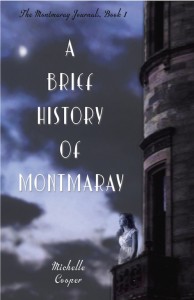The British Secretary of State for Education, Michael Gove, has announced that school children should be reading fifty books a year. Leaving aside the irony of this coming from a politician whose government is slashing funding to libraries, the proposal raises a number of questions. Does forcing reluctant or poor readers to read a book each week really make them more enthusiastic about reading? What does Mr Gove mean by ‘book’? I’m guessing (and I could be wrong) that he isn’t counting graphic novels, comics or picture books towards the total. And why fifty books, and not thirty, or a hundred? Is quantity more important than quality? Do they have to be fifty different books? If so, does that mean a child who chooses to read and re-read a beloved book isn’t getting any benefit from the experience? And how many books has Mr Gove read this year?
Of course, as a reader and a writer, I’d love more children to be exposed to the wonderful world of books. However, this proposal seems designed to suck all the joy out of reading by reducing it to quotas and ‘learning experiences’. If reading some arbitrary number of books is essential for a well-balanced life, then all adults should be doing it, too. I decided to examine my reading from the first twelve weeks of this year and determine what I’d learned from the experience.
Total Books Read: Sixteen. This doesn’t include the two books I started, and didn’t finish. One of those was a book I’d read before and decided to re-read to find out if it was really as bad as I’d thought (it was). The other was a contemporary YA romance that I hated so much, I had to stop reading about a third of the way through. I made two further attempts at it, then decided life was too short to waste any more of my time on it.
Number of Novels Read: Ten.
Number of ‘Memoirs’ Read: Three. (I’ve included in this category any book written by someone about their own life, even though one of the books probably wouldn’t be labelled a ‘memoir’.)
Number of Other Non-Fiction Books Read: Two.
Number of Anthologies Read: One.
Number of Books Read That I’d Previously Read: Five. (For various reasons, I didn’t feel up to tackling any new books during the first few weeks of the year, so I re-read some old favourites.)
Number of Books Written By People Who Are Dead (But Were Alive When They Wrote Their Books): Four.
Number of Books Written By Australian Authors: Five.
Number of Books Written By British Authors: Nine, if I include the editor of the anthology. (What? I’m writing a book set in England, okay?)
Number of Books Written By American Authors: One. (I revere you, Susan Faludi.)
Number of Books Translated from Swedish: One.
Number of e-Books: One. It was a free download because it was out of copyright, and I read it on my computer, because I don’t own any e-readers. I’d rather have read it as a paper book, but then I’d have had to pay serious money for it because it’s out of print in Australia – and frankly, it wasn’t that good.
Five Things I’ve Learned As A Result of Reading Approximately 1.3 Books Per Week This Year:
1. Vampire novels don’t have to be sparkly and anti-feminist. Sometimes, they can be scathing critiques of modern Scandinavian society that manage to combine extreme horror with a poignant portrayal of friendship between outsiders (Let the Right One In by John Ajvide Lindquist, for which I have not included a link because I couldn’t find one without plot spoilers).
2. I really like novels that combine information about an unfamiliar aspect of history with clever plotting and endearing, plausible characters (Small Island by Andrea Levy).
3. Novels about Victorian clergymen don’t have to be dull and worthy. Sometimes they can be witty, hilarious and unputdownable (Barchester Towers by Anthony Trollope).
4. The Slap by Christos Tsiolkas isn’t anywhere near as groundbreaking or perceptive as the hype suggests, and its publishers should have spent some of its advertising budget on more thorough copy-editing and proofreading. It was okay, though, and at least now, I can say I’ve finally read it.
5. I should read more anthologies, because they’re a good way to sample a range of writers. Also, I should now read everything Patrick Ness has ever written, because Different for Boys is the best short story I’ve read in years. Four vibrant teenage characters, a school that feels completely real, great dialogue, droll jokes, a boy with a crush on an Irish golfer, frantic sex, a devastating fight, a heartbreaking kiss and some snarky references to YA book censorship, all in only forty-four pages (in the YA anthology, Losing It, edited by Keith Gray. The other stories in this collection were fine, by the way, but they just didn’t hit me the way Different for Boys did.)
One Other Thing: If politicians want children to read more, they should provide adequate funding for libraries, teachers and learning disability support in schools, and remove taxes on sales of books.
One Further Thing: The Montmaray give-away is still on, till the 5th of April. If you win a book, you could count it towards your fifty books for the year.
That is all.






